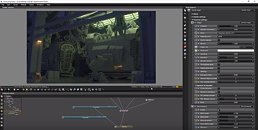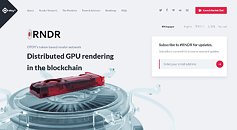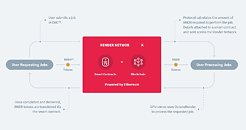Wednesday, October 17th 2018
Distributed GPU Rendering on the Blockchain is The New Normal, and It's Much Cheaper Than AWS
Otoy, based in Los Angeles, announced a few months ago the launch of RNDR, a cloud rendering platform that is based on the same blockchain used on the Ethereum platform. The idea is simple: it leverages a distributed network of idle GPUs to render graphics more quickly and efficiently.
The solution takes advantage of the unused power of our GPUs, and allows those who need to render images at full speed to do so through this platform. RNDR distributes the revenue through its own blockchain in a decentralized fashion, and in a recent survey of 1,200 of its contributors Otoy said it has the world's largest cloud rendering platform. One that has even been praised by Hollywood director and producer J.J. Abrams, founder of Brave and Basic Attention Token Brendan Eich, and famed talent agent Ari Emanuel.This network currently has 11,000 GPUs compatible with a platform that according to Otoy data allows access to a combined power of 1.5 million points in OctaneBench (OB), a measure that achieves through its software OctaneRender. Several posts on RNDR's blog on Medium show how the technology works and how it is evolving to support new features and hardware, with NVIDIA RTX technology as one of the latest examples.
A G2 instance on Amazon Web Services (AWS) based on NVIDIA Tesla GPUs imposes a cost of 0.60 cents/hour and offers a performance of only 37 OB in comparison. The company's vision of "to democratize computing rendering power" with its Render Network is an interesting way for those who want to make some money when they don't use their GPUs at home, and may offer an eye-catching alternative for independent content creators and even large audiovisual production studios.
Source:
VentureBeat
The solution takes advantage of the unused power of our GPUs, and allows those who need to render images at full speed to do so through this platform. RNDR distributes the revenue through its own blockchain in a decentralized fashion, and in a recent survey of 1,200 of its contributors Otoy said it has the world's largest cloud rendering platform. One that has even been praised by Hollywood director and producer J.J. Abrams, founder of Brave and Basic Attention Token Brendan Eich, and famed talent agent Ari Emanuel.This network currently has 11,000 GPUs compatible with a platform that according to Otoy data allows access to a combined power of 1.5 million points in OctaneBench (OB), a measure that achieves through its software OctaneRender. Several posts on RNDR's blog on Medium show how the technology works and how it is evolving to support new features and hardware, with NVIDIA RTX technology as one of the latest examples.
A G2 instance on Amazon Web Services (AWS) based on NVIDIA Tesla GPUs imposes a cost of 0.60 cents/hour and offers a performance of only 37 OB in comparison. The company's vision of "to democratize computing rendering power" with its Render Network is an interesting way for those who want to make some money when they don't use their GPUs at home, and may offer an eye-catching alternative for independent content creators and even large audiovisual production studios.



5 Comments on Distributed GPU Rendering on the Blockchain is The New Normal, and It's Much Cheaper Than AWS
Imagine you have a large network of devices, and you need to process massive streams of data. You can either upload everything into AWS, or you can utilize a blockchain, with computing power >10x cheaper than AWS (looking into Ether/kW cost), distributed p2p storage (which is also cheaper than AWS), and potentially lower latency.
It was bound to happen, sooner or later. Not sure about the total capacity of the mining network, but considering that it consumes more electricity than Ireland, it has to be, well, substantial.